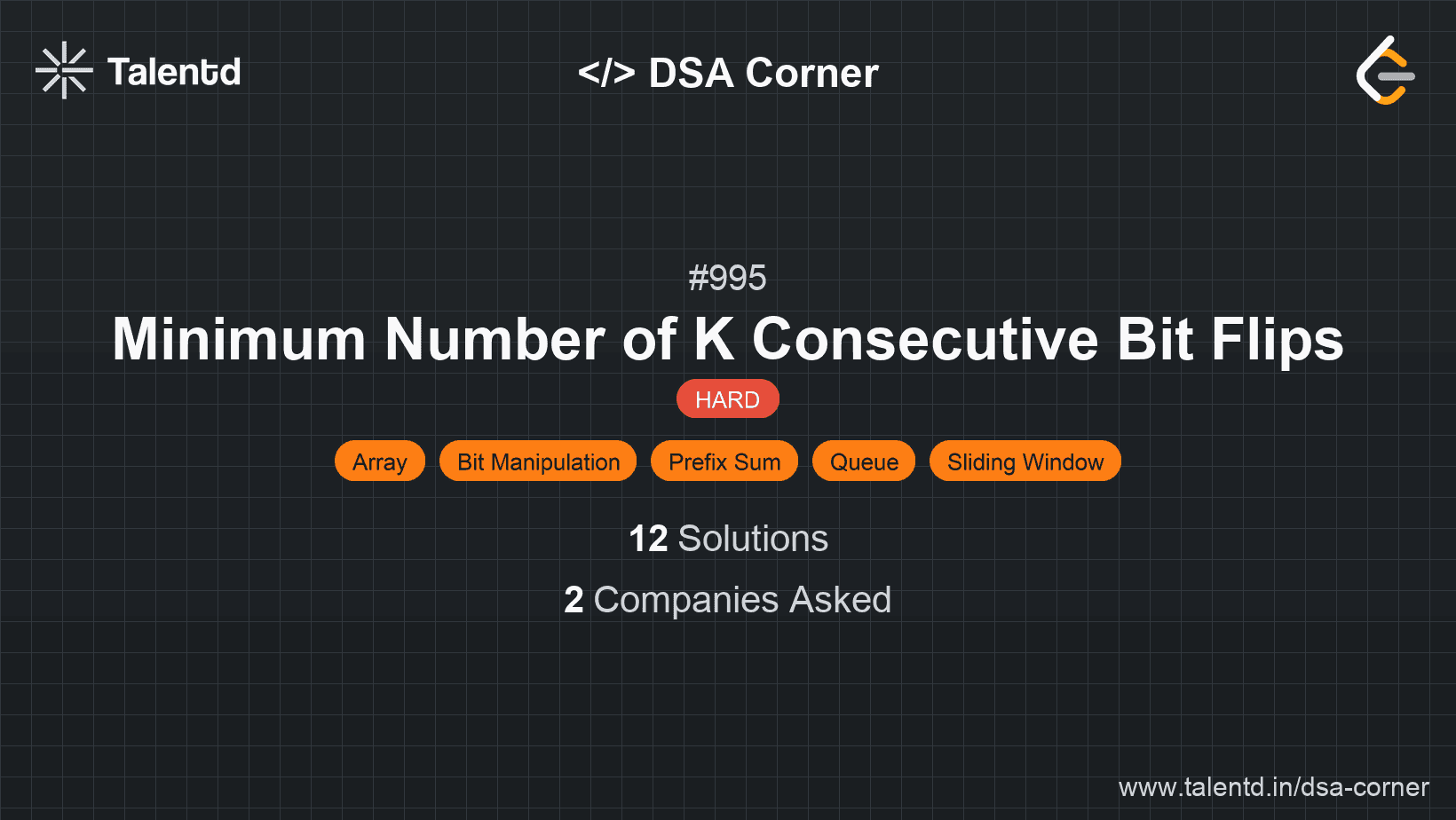
Sponsored
Sponsored
This approach uses a greedy strategy with the help of a queue to track the index of flips. The idea is to traverse through the array and only flip when necessary, using a queue to efficiently track start points of flips that affect the current position. When flipping, add the index to a queue. Dequeue any index that is outside the current consideration (i.e., more than 'k' steps away).
The time complexity is O(n), where n is the length of nums, because we make a single pass through the array, and the space complexity is O(n) due to the auxiliary array used to track flips.
1using System;
2using System.Collections.Generic;
3
4public class Solution {
5 public int MinKBitFlips(int[] nums, int k) {
6 Queue<int> flip = new Queue<int>();
7 int flips = 0, flip_count = 0;
8 for (int i = 0; i < nums.Length; i++) {
9 if (flip.Count > 0 && flip.Peek() + k <= i) {
10 flip.Dequeue();
11 flip_count--;
12 }
13 if (nums[i] == flip_count % 2) {
14 if (i + k > nums.Length) return -1;
15 flips++;
16 flip.Enqueue(i);
17 flip_count++;
18 }
19 }
20 return flips;
21 }
22
23 public static void Main(string[] args) {
24 Solution sol = new Solution();
25 int[] nums = {0, 0, 0, 1, 0, 1, 1, 0};
26 int k = 3;
27 Console.WriteLine(sol.MinKBitFlips(nums, k)); // Output: 3
28 }
29}The solution in C# closely resembles the Java implementation, using a queue to manage flip indices and the flip state while iterating through the binary array. Change to the bit state is indicated by the flip count parity, managed using a queue.
This approach utilizes a sliding window technique with a flipping effect flag, which acts as a state tracker for ongoing flip operations. Using an in-place element flipping marker in the array enables this technique to minimize memory usage and avoid using additional data structures to track state.
Time complexity is O(n) because only single iteration and local modification are performed, while the space complexity is O(1), assisting state via in-place array manipulation.
#include <iostream>
using namespace std;
int minKBitFlips(vector<int>& A, int K) {
int flips = 0, flipparity = 0;
for (int i = 0; i < A.size(); i++) {
if (i >= K && A[i - K] > 1) {
A[i - K] -= 2;
flipparity ^= 1;
}
if (A[i] == flipparity) {
if (i + K > A.size()) return -1;
flips++;
flipparity ^= 1;
A[i] += 2;
}
}
return flips;
}
int main() {
vector<int> A = {0, 0, 0, 1, 0, 1, 1, 0};
int K = 3;
cout << minKBitFlips(A, K) << endl; // Output: 3
return 0;
}C++ implementation ensures that the flip parity is adjusted using direct manipulations on the vector elements, encoding the flip occurrence directly in array values, avoiding extra space.